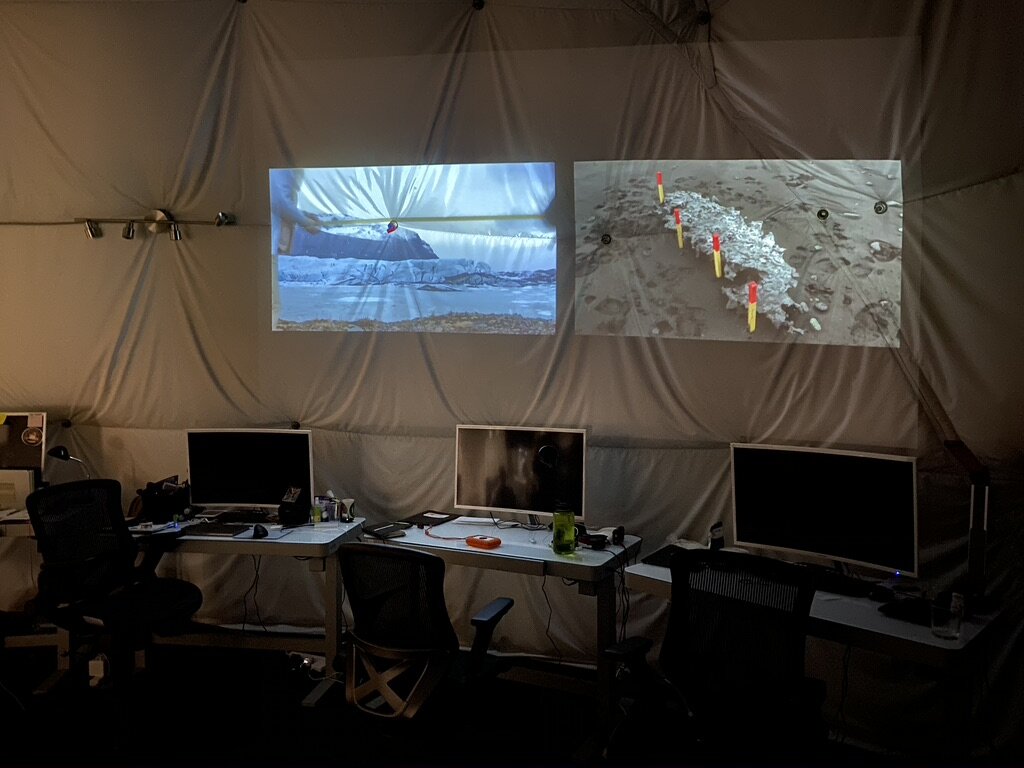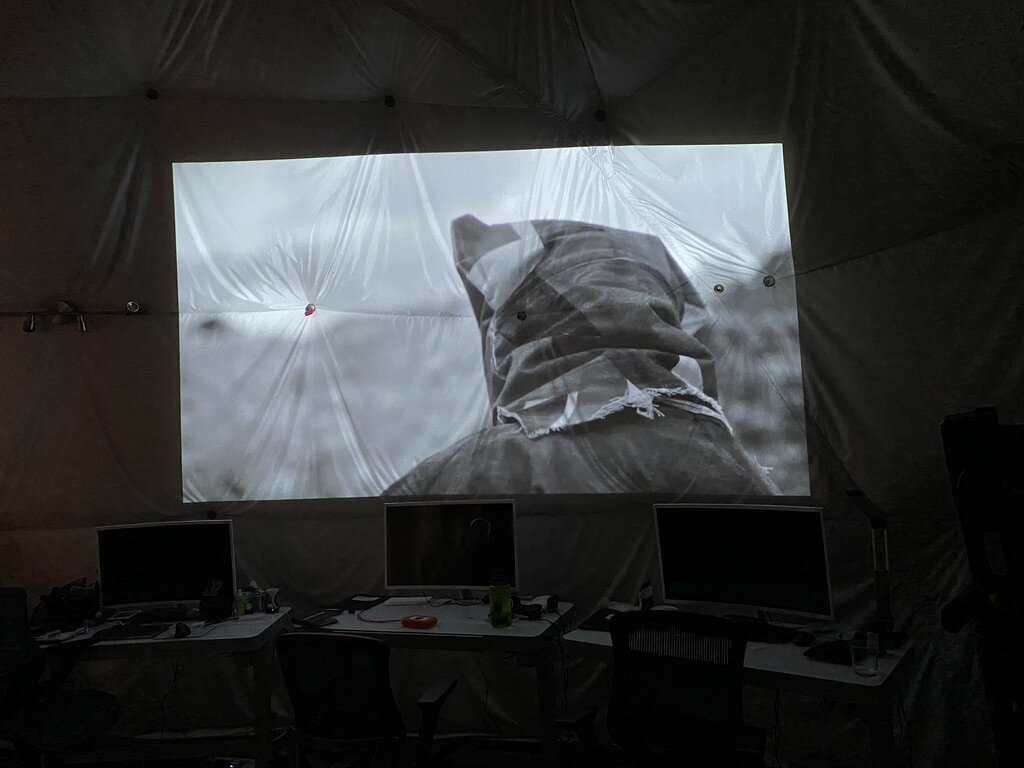SUPERCOLLIDER | Off-World: Arctic Origins
SUPERCOLLIDER presents an out-of-this-world satellite exhibition on Mars at the Hawai'i Space Exploration Analog and Simulation (HI-SEAS).
Curated by: Richelle Gribble and Isabel Beavers
Featured Artists: Cara Levine, Isabel Beavers, Laine Rettmer, Robert Platt, Richelle Gribble, Stephanie Imbeau
SUPERCOLLIDER creates immersive science + art experiences—including (inter)nationally curated satellites for pop-ups, festivals, and research institutes—that vividly reclaim our future and explore our present.
Located at the Beacon Arts Building in Los Angeles, CA, SUPERCOLLIDER is the Mothership (HQ) for sci+art+tech exhibitions in greater Los Angeles and beyond. We feature bi-monthly exhibitions and extend our curations via Satellites to local and (inter)national spaces.
Our mission is to drive persistent conversation about the future of our home planet. Out of sight, out of mind can no longer define our pursuit of progress. We bring such topics in-sight and in-mind, with art at the forefront.
Cara Levine, Emerald Mother (2018), single channel HD video, 09:43
Richelle Gribble, Left Behind (2020), 3D animation with sound, 03:15
Stephanie Imbeau, Procession (2019), film sketch, 02:44
Off-World: Arctic Origins is a selection of artworks about the Arctic wilderness. It also questions our role in reaching and exploring the red planet. This screening negotiates life at the edge of survival by considering what the expeditionary journey reveals about us. This reel was originally created to be exhibited during an analogue mission on Mars at the Hawai'i Space Exploration Analog and Simulation (HI-SEAS). As the work moves from its original location—a Mars simulation habitat—to the context of an art museum, the story of exploration remains at the forefront. In summation, the artworks present a multifaceted investigation of the Arctic as a physical and psychological site—one ripe for questioning our role in space travel and Martian settlement
Isabel Beavers, Spring Bloom (2017), digital animation, 3:02
The Arctic represents the complex tensions of our age: ecological fragility against extraction and exploration; an extreme climate presenting challenges for life on Earth and other planets; and the test of survival in far-reaching places. The distant poles of planet Earth push the human spirit to extreme discoveries and bring new life and research to a seemingly untouchable place. Furthermost regions like the Arctic are utilized as simulation sites to test the limits of life in harsh environments, simulating experiences on Mars, the Moon, and in spaceflight. How is life pushed to the limits in our polar regions? How have humans survived and thrived in the Arctic for millenia? Which organisms survive? What trials do they and their communities undergo?
Isabel Beavers and Laine Rettmer, MELT (2019), single-channel video with sound, 10:52
As astronaut Nicholas Patrick describes, “the further out I traveled, the closer I felt to home.” This journey transforms our inner and outer worlds, rearranging the ways we think of position and ownership. From glacial Arctic terrain to the red planet, we find ourselves challenging notions of home, extremity, and longevity. Stephanie Imbeau’s white fabric house-like structures teeter in the wind, but settle nowhere—an alien form in the harsh Arctic landscape. Robert Platt interrogates the notion of settlement, by presenting oscillating perspectives from the position of the colonizer and the colonized. His figures eventually camouflage into the landscape, both belonging and intruding in his film Becoming Arctic.
Isabel Beavers and Laine Rettmer, Measure (2019), two-channel video with sound, 5:00
Other works look to focus not on the ways humans are changed by their journeys, but how journeys alter environments, physically and psychologically. Is this a conquest or an arrival? In the work Emerald Mother, Cara Levine exchanges messages with the viewer and the landscape in which she is situated, to mark or interpret the ever-changing environment. As seen in Left Behind, Richelle Gribble meditates on the omnipresent trail of human detritus. Taking on its own life, plastic waste traverses our globe autonomously, leaving a permanent mark of human impact in fragile ecosystems. Like the tire treads of the Mars rover, we ponder the trail that is left behind as we continue to venture outward.
Robert Platt, Becoming Arctic (2020), Experimental Film, 25:35
As ecologies morph, new environmental mythologies are born. The works Melt and Measure by Isabel Beavers and Laine Rettmer occupy this tipping point as an opportunity to generate a new mythology, one that reimagines power relationships as they apply to gender, ecology and story. These shifts usher in a new era because our positionality as humans inevitably changes in relation to the more-than-human species around us. Spring Bloom visualizes extreme algal blooms in the Arctic, revealing the potential of single-celled organisms to populate and thrive in harsh climates. Considering bacteria might be the first species to survive on Mars, this work—as well as the entire exhibition Off World: Arctic Origins—asks what human and non-human life could be on another world.
Written by Isabel Beavers and Richelle Gribble.
Edited by Janna Avner.
Exhibiting “Off World: Arctic Origins” on Mars to a crew of astronauts in training at the HI-SEAS. PC: Richelle Gribble









